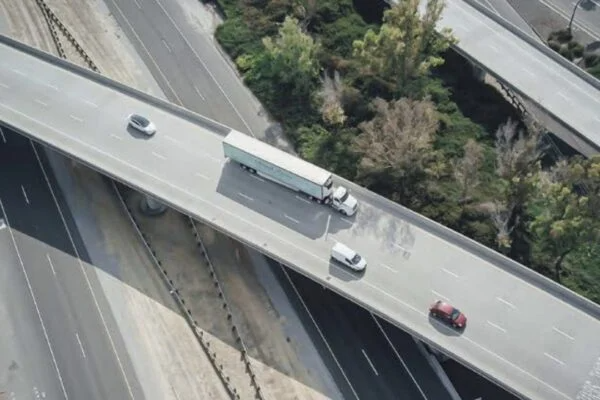The European vehicle safety assessment program Euro NCAP plans to expand its scope of activities: In addition, the organization wants to evaluate heavy trucks in the future. The reason: trucks are involved in serious accidents at a far above-average rate.
According to ITF estimates, road freight transport will triple by 2050 compared to today – and trucks are already disproportionately involved in accidents with injuries and fatalities. While they account for only 1.5 percent of registered vehicles on Europe’s roads, accidents involving trucks account for nearly 15 percent of traffic fatalities in the UE. “Vision Zero cannot be achieved without addressing the challenges that trucks pose on our roads,” concludes Euro NCAP’s safety experts.
In its latest report, “Safer Trucks: on the Road to Vision Zero,” Euro NCAP quotes expert Matthew Avery of vehicle safety firm Thatcham Research. “Advanced driver assistance systems are now standard equipment on most European passenger cars, helping to reduce accidents by more than 40%. Heavy trucks experience the same accidents, but are not equipped with this technology, resulting in a disproportionate number of casualties in accidents involving heavy vehicles,” Avery said.

By 2029, Euro NCAP intends to provide various electronic safety systems for trucks. Image © Euro NCAP
With this in mind, the organization is planning a new Truck Safe rating system which according to its approach developed over the past decades, will include electronic safety measures and driver assistance systems. This rating system will allow all players in the freight industry to identify and assess the safety level of equipment in their truck fleets. This will not only improve driver safety, but also create a market for safe technologies, allowing manufacturers to innovate and improve their offerings within a clear safety framework based on Euro NCAP principles. The ratings will also enable cities and authorities to identify the best vehicles for their roads and incentivize their adoption. Fleet operators will thus be able to determine the vehicle specifications they must meet in highway agency programs.
However, the relevant safety parameters for trucks differ greatly depending on their type of use. Therefore, the “one size fits all” principle is not appropriate for trucks, the organization said. For example, many trucks are used from depot to depot and never come close to a built-up area. Others are in tasked with distributing goods in cities, and still others, such as 4-axle rigid dump trucks, must navigate off-road sites, dirt roads, highways and city centers. “It doesn’t make sense to promote a city-specific safety solution for a truck that never enters an urban area – that would add cost without providing benefit. However, if vehicles without safety systems are approved for urban areas, it is only right that cities try to keep them away from areas where these risks are high,” Euro NCAP experts sum up.
On this basis, the organization has developed a concept that provides a dual assessment of truck safety for urban and rural roads. All vehicles are assessed against both sets of criteria. When vehicle operators purchase a vehicle for a specific purpose, they also need only consider the corresponding rating. Only general-purpose vehicles must score well on both ratings, the organization said.



Leave a comment